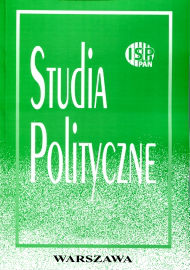Polityka komunikacyjna Unii Europejskiej. Ile polityki, a ile public relations?
EU Communication policy. How much policy, how much PR?
Author(s): Szymon ChojnowskiSubject(s): Politics / Political Sciences
Published by: Instytut Studiów Politycznych PAN
Summary/Abstract: Numerous European social studies, as well as the results of Treaty referenda, prove that communication along the EU–citizens line evidently fails. Over the passing years it has been possible to work out new solutions, which made this communication more efficient, no breakthrough can be seen yet, however. Is the present form of social communication in the EU conducive to European integration? And is the public relations category adequate at all in the context in question? There is a paradox in the EU communication policy: despite the occurrence of a public relations-type activities, it is only the term ‘communication’ which is in use officially. PR tools are used by the EU institutions on various levels; mostly, they are information-related activities which split into active (conferences, briefings, study tours, etc.) and passive (leaflets, brochures, internet pages). An important role in the administration of various EU institutions is also performed by press offices, spin doctors and press spokespersons. The problem suffered by EU institutions is, however, that of a lack of coherence in its communication with the citizens. The message is not uniform because it originates in many sources and is itself a result of often contradictory interests inside these institutions. What personalisation of EU policy there is, is insufficient to be seen, while information-related activities are, most of all, of a passive nature and, as a result, do not elicit any significant interest among the citizens. The nature of the European communication policy’s failures is thus complex. First of all, a notion of democracy which is erroneous in the EU context still lingers in the decision makers’ awareness. Second, communication is disturbed by national interests, and third, public relations tools are not used enough and the commonly accessible and opinionforming magazines or television stations are missing from among the media involved.
Journal: Studia Polityczne
- Issue Year: 2010
- Issue No: 26
- Page Range: 87-105
- Page Count: 19
- Language: Polish

